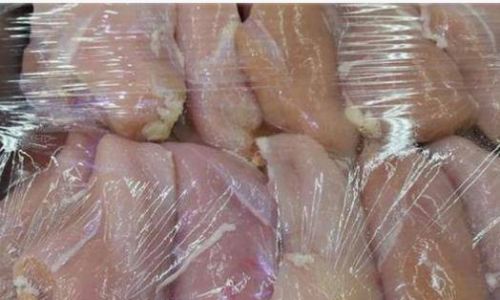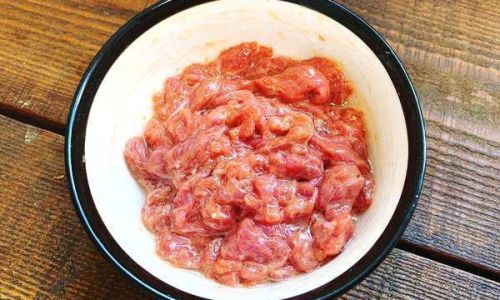Introduction
Thawing chicken breast properly is crucial for ensuring food safety and maintaining the quality of the meat. Whether you’ve forgotten to take it out of the freezer in advance or simply need to prepare a meal quickly, there are several methods to thaw chicken breast safely and efficiently. This guide will walk you through the best practices for thawing chicken breast, including refrigerator thawing, cold water thawing, and microwave thawing, while also addressing common mistakes and safety concerns.
Understanding the Importance of Safe Thawing
Before diving into the specifics of how to thaw chicken breast, it’s essential to understand why safe thawing practices are vital. Chicken, especially raw chicken, can harbor harmful bacteria such as Salmonella and Campylobacter. These bacteria can multiply rapidly if the chicken is not handled properly, including during the thawing process. Therefore, it’s crucial to thaw chicken breast in a way that minimizes the risk of bacterial growth.

Method 1: Refrigerator Thawing
Overview
Refrigerator thawing is the safest and most recommended method for thawing chicken breast. It allows the chicken to thaw slowly at a consistent temperature, which prevents the growth of harmful bacteria.
Steps
-
Preparation: Remove the chicken breast from the freezer and place it in a container or on a plate to catch any juices that may leak.
-
Placement: Place the container or plate on a lower shelf in the refrigerator. This minimizes the risk of cross-contamination with other foods.
-
Timing: Allow approximately 24 hours for every 4-5 pounds (1.8-2.3 kg) of chicken breast. For example, a single chicken breast (about 6-8 ounces or 170-225 grams) will typically thaw in the refrigerator overnight.
-
Storage: Once thawed, chicken breast can be kept in the refrigerator for an additional 1-2 days before cooking.
Pros and Cons
- Pros: Safe, consistent, and minimal risk of bacterial growth.
- Cons: Requires planning and can be time-consuming.
Method 2: Cold Water Thawing
Overview
Cold water thawing is a faster alternative to refrigerator thawing, but it requires more attention to ensure food safety.
Steps
-
Preparation: Remove the chicken breast from the freezer and place it in a sealed, leak-proof plastic bag. This prevents cross-contamination and keeps the chicken submerged in the water.

-
Submersion: Submerge the sealed bag in a bowl or sink filled with cold water. Ensure the water covers the chicken completely.
-
Changing Water: Change the water every 30 minutes to ensure it stays cold. This prevents the water from warming up and potentially promoting bacterial growth.
-
Timing: Chicken breast will typically thaw in 1-2 hours using this method.
-
Immediate Cooking: Once thawed, cook the chicken breast immediately. Do not refreeze or store it in the refrigerator after thawing with this method.
Pros and Cons
- Pros: Faster than refrigerator thawing.
- Cons: Requires constant monitoring to change the water and immediate cooking upon thawing.
Method 3: Microwave Thawing
Overview
Microwave thawing is the quickest method but also the most risky in terms of food safety. It can lead to uneven thawing and partial cooking, which can promote bacterial growth.
Steps
-
Preparation: Remove any packaging and place the chicken breast on a microwave-safe dish.
-
Setting: Use the defrost or low power setting on your microwave. Most microwaves have a specific setting for thawing meat.
-
Monitoring: Thaw in short intervals (usually 2-3 minutes per pound or 450-675 grams), pausing to turn the chicken breast over and check for doneness.
-
Caution: Be cautious of hot spots where the chicken may start to cook. If you notice any cooking, stop the thawing process and cook the chicken immediately.

-
Immediate Cooking: Once thawed, cook the chicken breast right away.
Pros and Cons
- Pros: Very fast.
- Cons: High risk of partial cooking and bacterial growth, requires constant monitoring.
Common Mistakes and Safety Tips
Mistake 1: Thawing on the Counter
Never thaw chicken breast on the counter or in hot water. This rapid increase in temperature can cause harmful bacteria to multiply rapidly.
Mistake 2: Refreezing Thawed Chicken
Once thawed, chicken breast should not be refrozen unless it was thawed in the refrigerator and has not been left out for more than two hours. Refreezing thawed chicken can compromise its safety and quality.
Mistake 3: Overlooking Cross-Contamination
Always use separate utensils, plates, and containers for raw chicken to prevent cross-contamination with other foods. Wash hands, utensils, and surfaces thoroughly after handling raw chicken.
Safety Tips
- Marinate Safely: If you plan to marinate the chicken breast after thawing, do so in the refrigerator and never on the counter.
- Cook Thoroughly: Ensure the chicken breast is cooked to an internal temperature of 165°F (75°C) to kill any harmful bacteria.
- Use a Food Thermometer: A food thermometer is the most reliable way to check the internal temperature of the chicken.
Conclusion
Thawing chicken breast safely and effectively is an essential step in preparing a delicious and healthy meal. By choosing the right thawing method—whether it’s the safe and consistent refrigerator thawing, the faster cold water thawing, or the quick but risky microwave thawing—you can ensure that your chicken breast is ready for cooking without compromising its safety or quality. Always remember to handle raw chicken with care, follow proper food safety guidelines, and cook the chicken thoroughly to an internal temperature of 165°F (75°C). With these practices in place, you can enjoy your thawed chicken breast with peace of mind.
Additional Tips for Optimal Results
Trimming Fat
Before thawing, consider trimming any excess fat from the chicken breast. This will help it cook more evenly and reduce the risk of flare-ups on the grill or in the oven.

Brining
For juicier and more flavorful chicken breast, consider brining it before freezing. A brine solution of salt, sugar, and water can be used to draw moisture into the meat, keeping it tender and flavorful even after thawing and cooking.
Marinating
Marinating chicken breast can add a burst of flavor and tenderize the meat. However, always marinate in the refrigerator to prevent bacterial growth.
Storage Considerations
When storing thawed chicken breast in the refrigerator, place it on the bottom shelf to prevent cross-contamination with ready-to-eat foods. Use an airtight container or wrap the chicken tightly in plastic wrap or aluminum foil.
Cooking Techniques
Experiment with different cooking techniques to find your favorite way to prepare chicken breast. Grilling, baking, sautéing, and stir-frying are all great options that can bring out different flavors and textures in the meat.
By following these tips and guidelines, you can ensure that your thawed chicken breast is not only safe to eat but also delicious and satisfying. Happy cooking!





0 comments